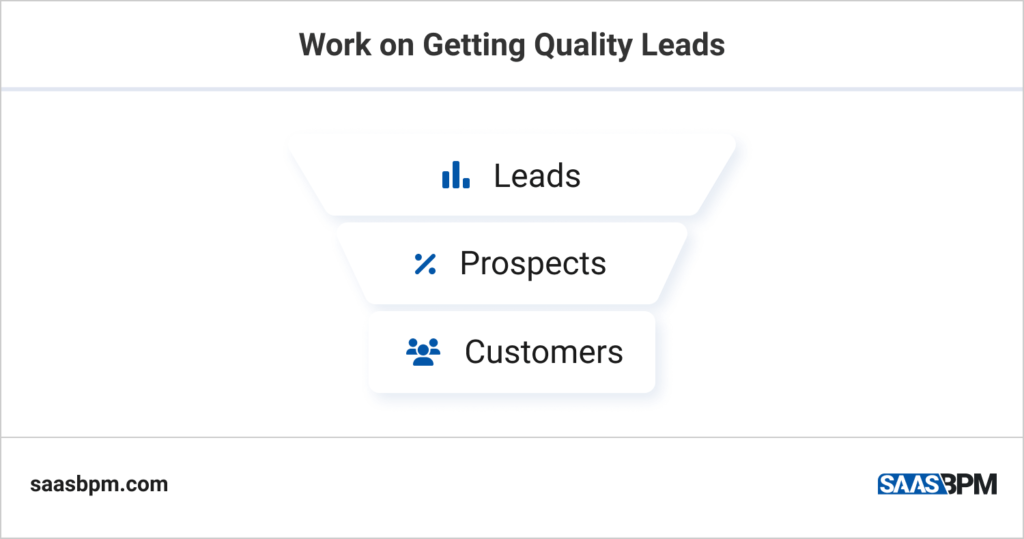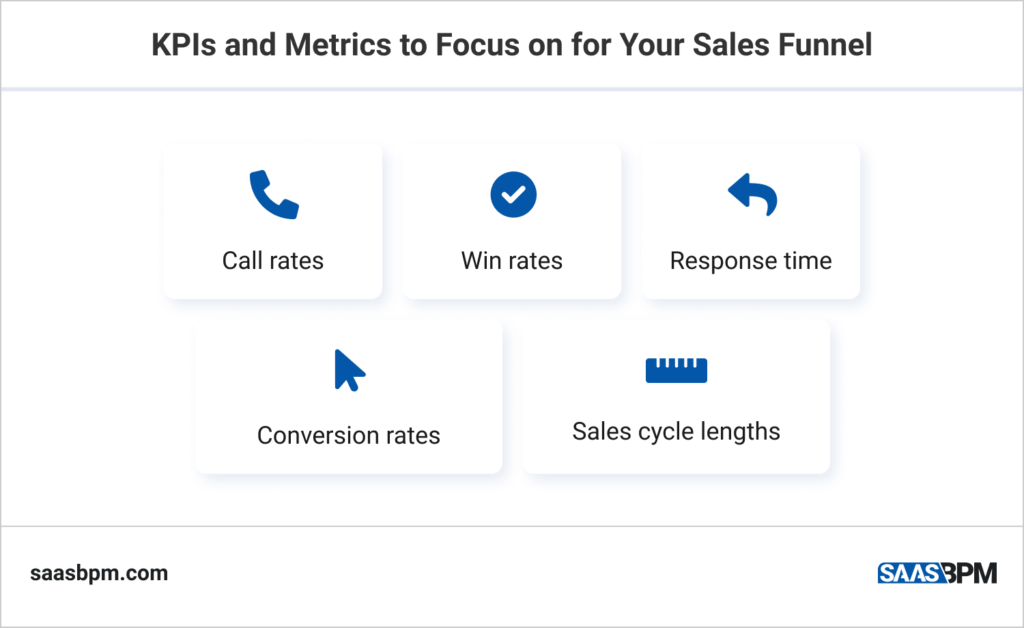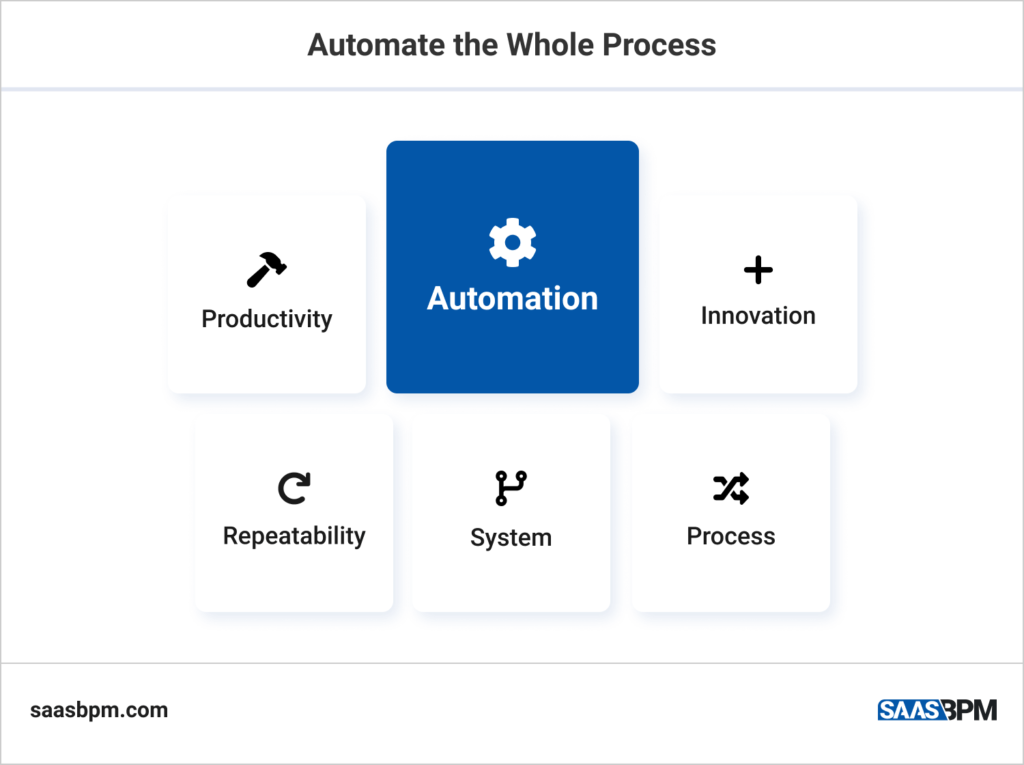Defining marketing strategies for the different sales funnel stages can sometimes become overwhelming and confusing. Understanding what goes on in every step can lead to better lead nurturing and generation, leading to an improved conversion rate.
A sales funnel is defined as a stage-based approach for businesses to turn prospective leads into actual buyers. The customers have to advance to the next stage until they make the purchase and then come back later, which is called customer retention. Getting a clear view of your sales funnel will help you understand your clients better. Additionally, it helps with having a consistent and effective process that can be used repeatedly.
Having a data-driven decision-making strategy will help entrepreneurs get a more organized sales process. This article will discuss the proper tactics that one should implement to enhance their sales funnel strategy.
Work on Getting Quality Leads
The first step towards a better sales process is making sure to attract better leads. While advertising to a massive audience might sound compelling, it is not a viable strategy. Focus on the prospects that are likely to convert, and you are on your way to success. Remember that trying to reach as many people as possible can waste resources and time.
Here’s a couple of tips for attracting niche leads:
1. Create a survey and have your target market answer it. See which products they are eyeing, what content they will most likely engage with, and be open to suggestions.
2. Take the data and compile them into an automated system. Doing this will help make everything organized and easier to come back to.
3. Once you’ve got the answers all figured out, create different buyer personas.
4. Start creating personalized content for each persona and advertise accordingly.
5. Work on your SEO, social media ads, and paid advertisements.

Set a Meeting With Your Sales Team
Your sales team is the backbone of your business. They are the ones talking to the customers, so they know what the people are looking for. Disseminate the data that you have gathered and make sure that they are aware of any changes. Using a business process management tool can help get everyone on the same page.
It is also imperative to set key process indicators so you and the whole team know the results. Discuss the central vision with the employees and ask them if they have any suggestions to make the process easier to follow.
Assess and Learn to Prioritize
Every process is set to change over time, and your salespeople should always be aware of this. Set brainstorming sessions at least once or twice a month and see if things must be prioritized. Assess your current numbers and be ready to tweak the steps if needed. Take a look at your conversion rates and see if the leads are turning into buyers. If the numbers are low, then it might be time to apply a couple of changes.
Determine which stage the clients tend to convert or change their minds during the questioning stage? Or do they tend to walk away after the qualifying stage? If they make it past the closing stage, then that’s good news. Prioritize where you need to apply changes to be able to move through the sales funnel strateegy.
Here are a couple more metrics that you should pay attention to:
1. Call rates
2. Win rates
3. Response time
4. Conversion rates
5. Sales cycle length

Follow Up on Your Leads
Having a data-driven decision-making marketing strategy means focusing on warm leads. Some will tend to abandon their cart at some point in the sales funnel, but you shouldn’t stop at that. Let your sales team know that it is critical to follow up on these warm leads. Once you have the customers’ contact information, it’s time to share personalized content that could bring them back to the funnel.
Don’t wait for a long time to follow up on leads. Make it a point to remind them of what’s left on their cart and explain why they should go through with the checkout process. Sending these warm leads an email, or a chat message can help bring them back to the sales funnel stages. Implementing a business process management system can help you store vital contact information and send emails personally yet automated.
Automate the Whole Process
Data collection is a very time-consuming process, and doing it manually is not efficient. Invest in a good automated system so you and the team can focus on acquiring and converting the leads. Having a BPM tool in place will help increase productivity, improved agility, and it can also give you better data analysis and management.

Optimize the Process
Tracking your lead sources is imperative to the process. See which channels your customers are frequenting and which one gives you the best conversion rates. Focus on optimizing your process on these channels, and you’ll see growth in numbers. Here are a couple of steps to follow for optimizing your sales funnel strategy:
1. Get to know your audience on a deeper level.
2. Come up with educational content that your readers will deem helpful.
3. Complement your text with engaging and high-quality images.
4. Share testimonials, customer reviews, and even personal stories.
5. Use a compelling call to action.
6. Create easy-to-follow checkout and survey forms.
Wrapping Up
Creating your data-driven marketing strategy will save you from wasting critical resources. People’s changes change from time to time, and adapting to them will help keep your business afloat. Using a data-driven approach is a surefire way to get your leads to convert, as the numbers don’t lie. It’s a way to stand out from a sea of competitors who are trying to outrun yours. Communicate with the whole organization and make sure that everyone is on the same page at all times. This way, you can ensure that you are working towards customer acquisition and lead generation the right way.

